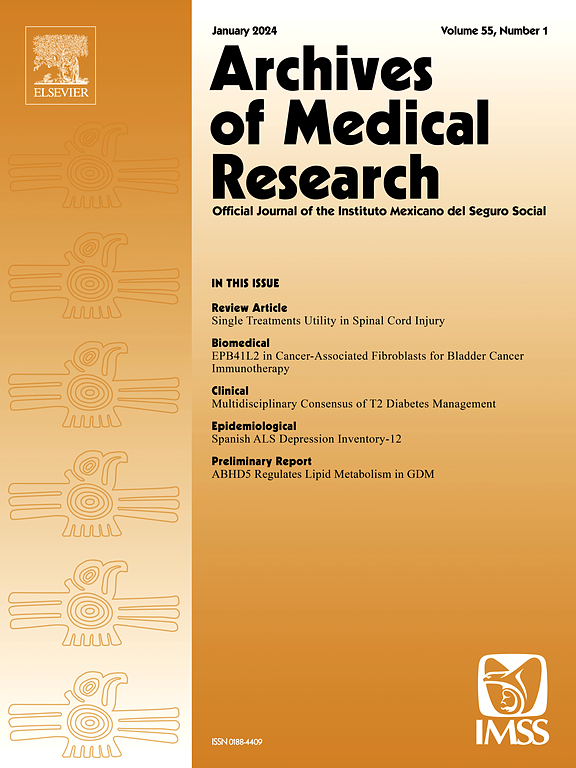Pharmacogenetic Drug Administration and Community Health: A Cross-Sectional Telecommunication-Based Study
IF 3.4
3区 医学
Q1 MEDICINE, RESEARCH & EXPERIMENTAL
引用次数: 0
Abstract
Purpose
Drugs are considered pharmacogenetic (PGx) when genetic variants impact their efficacy, metabolism, or toxicity due to drug-gene interactions. This study aimed to elucidate PGx drug intake patterns in population samples.
Methods
The Short Message Service (SMS) invitations were sent to randomly selected adult clients of a telecommunication company. A total of 2,149 respondents were enrolled. The online questionnaire included questions on demographic, clinical, pharmacological, behavioral, and other factors. PharmGKB resources were used to identify PGx genes potentially involved in pharmacotherapy outcomes. Proneness to adverse drug reactions (ADRs) was assessed based on the ADR index (ADRi).
Results
Most respondents (68.45%) were taking pharmacotherapy (433 drugs) associated with 839 PGx genes. The top five PGx drugs included bisoprolol, aspirin, losartan, indapamide, and omeprazole. The five most important PGx gene families involved in pharmacotherapy were CYP, UGT, SLC, IL, and HLA. The top five PGx genes were: CYP3A5, ABCB1, CYP2D6, CYP2C9, and ACE. The number of PGx genes per drug ranged from 0 to 138. A high number of PGx genes associated with pharmacotherapy were observed in patients with coronary artery disease, diabetes mellitus, endocrine diseases, dyssomnia, and rheumatic diseases. PGx burden significantly correlated with health conditions, median ADRi values, health-related behavioral traits, and clinical-pharmacology characteristics (p <0.001).
Conclusion
The high prevalence of PGx drug utilization encourages the implementation of pre-emptive PGx testing. In the meantime, medical history taking, dose adjustment, assessment of drug blood concentrations, and committing to medical minimalism may prevent PGx-triggered ADRs.
药物遗传药物管理和社区健康:一项基于电信的横断面研究
当基因变异由于药物-基因相互作用而影响其疗效、代谢或毒性时,药物被认为是药物遗传学(PGx)。本研究旨在阐明PGx药物在人群样本中的摄入模式。方法随机抽取某电信公司成年客户,向其发送短信邀请。共有2149名受访者被招募。在线问卷包括人口学、临床、药理学、行为学和其他因素的问题。利用PharmGKB资源鉴定可能与药物治疗结果相关的PGx基因。采用ADR指数(ADR index, ADRi)评价药物不良反应(ADR)的易发性。结果大部分受访患者(68.45%)正在接受与839个PGx基因相关的药物治疗(433种药物)。排名前五的PGx药物包括比索洛尔、阿司匹林、氯沙坦、吲达帕胺和奥美拉唑。参与药物治疗的五个最重要的PGx基因家族是CYP、UGT、SLC、IL和HLA。前5位PGx基因分别为:CYP3A5、ABCB1、CYP2D6、CYP2C9和ACE。每种药物的PGx基因数量从0到138不等。在冠状动脉疾病、糖尿病、内分泌疾病、睡眠障碍和风湿病患者中观察到大量与药物治疗相关的PGx基因。PGx负担与健康状况、中位ADRi值、健康相关行为特征和临床药理学特征显著相关(p <0.001)。结论PGx药物使用率高,鼓励开展预防性PGx检测。同时,病史记录、剂量调整、药物血药浓度评估以及医疗简约可以预防pgx引发的不良反应。
本文章由计算机程序翻译,如有差异,请以英文原文为准。
求助全文
约1分钟内获得全文
求助全文
来源期刊

Archives of Medical Research
医学-医学:研究与实验
CiteScore
12.50
自引率
0.00%
发文量
84
审稿时长
28 days
期刊介绍:
Archives of Medical Research serves as a platform for publishing original peer-reviewed medical research, aiming to bridge gaps created by medical specialization. The journal covers three main categories - biomedical, clinical, and epidemiological contributions, along with review articles and preliminary communications. With an international scope, it presents the study of diseases from diverse perspectives, offering the medical community original investigations ranging from molecular biology to clinical epidemiology in a single publication.
 求助内容:
求助内容: 应助结果提醒方式:
应助结果提醒方式:


